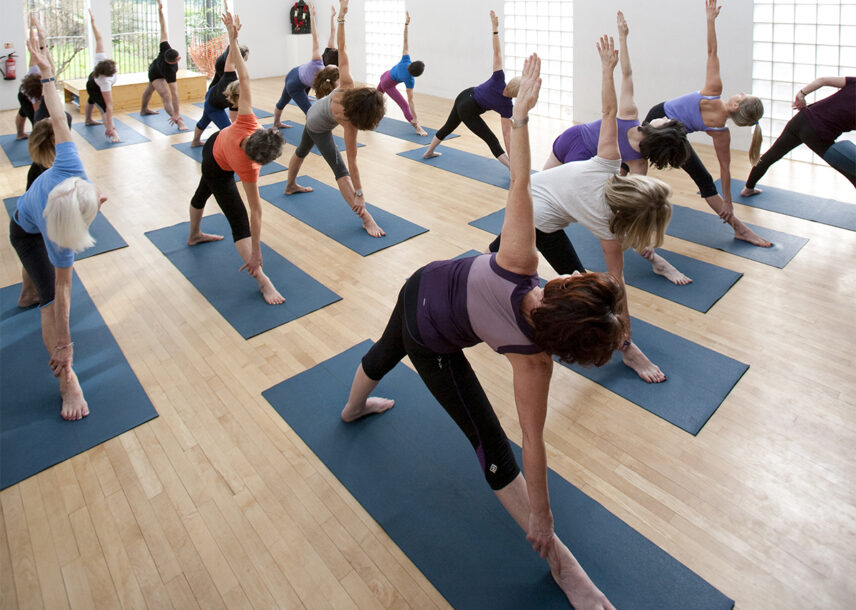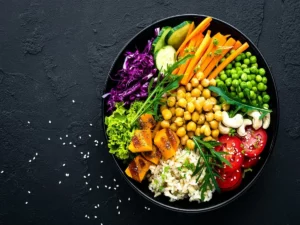In a bustling world filled with distractions and demands, finding solace and harmony within ourselves often becomes an elusive pursuit. Amidst this chaotic backdrop, Iyengar Yoga emerges as a transformative practice that not only rejuvenates the body but also nurtures the mind and spirit. Rooted in a profound understanding of the human body and mind, Iyengar Yoga offers a path towards self-discovery, healing, and self-realization.
In this article, we will delve deeper into the principles and unique characteristics that define Iyengar Yoga. We will explore the therapeutic benefits, the use of props, and the precise alignment techniques that make this practice accessible to individuals of all ages and physical abilities. By unraveling the profound wisdom of Iyengar Yoga, we invite you to embark on a journey of self-discovery, balance, and transformation that transcends the confines of our busy lives.
Origins and Philosophy of Iyengar Yoga
Iyengar Yoga finds its roots in the ancient practice of classical Hatha Yoga, which dates back thousands of years. B.K.S. Iyengar, the founder of Iyengar Yoga, was deeply influenced by the teachings of his guru, Tirumalai Krishnamacharya, who is often hailed as the father of modern yoga. Krishnamacharya’s emphasis on the therapeutic aspects of yoga and his innovative approach to asana practice laid the foundation for Iyengar’s profound understanding and development of the practice.
Philosophical Principles and Teachings
Alignment, precision, and sequencing form the cornerstone of Iyengar Yoga. With an unwavering commitment to these principles, the practice aims to bring about physical, mental, and spiritual harmony. Alignment refers to the precise positioning of the body in each yoga pose, allowing for the optimal flow of energy and the release of tension. Through alignment, practitioners develop awareness of their bodies and cultivate stability, balance, and strength.
Precision is integral to Iyengar Yoga, as it guides practitioners to delve deeper into the practice. By paying meticulous attention to the minutest details of each pose, practitioners explore the subtleties of their bodies and minds, fostering self-discovery and transformation. This precision ensures that the benefits of each pose are fully realized, promoting both physical and mental well-being.
Sequencing in Iyengar Yoga is carefully designed to create a harmonious and progressive flow. Poses are methodically arranged to prepare the body, gradually building strength, flexibility, and endurance. The sequencing also takes into account the natural order of asanas, allowing practitioners to explore different categories of poses, such as standing, forward bends, backbends, twists, and inversions. This systematic approach helps cultivate a balanced practice that addresses the needs of the whole body.
Commonly Practiced Asanas in Iyengar Yoga
- Standing Poses: Standing poses, such as Tadasana (Mountain Pose), Virabhadrasana (Warrior Poses), and Trikonasana (Triangle Pose), form the foundation of the practice. These poses build strength, stability, and grounding while cultivating focus and balance.
- Forward Bends: Forward bends, including Uttanasana (Standing Forward Fold) and Paschimottanasana (Seated Forward Bend), help to lengthen and stretch the back, hamstrings, and calves. These poses promote introspection, calm the mind, and relieve tension in the spine.
- Backbends: Backbends like Bhujangasana (Cobra Pose), Urdhva Mukha Svanasana (Upward Facing Dog), and Ustrasana (Camel Pose) open the chest, strengthen the back muscles, and improve posture. These poses energize and uplift the practitioner while expanding the front of the body.
- Twists: Twisting poses, such as Bharadvajasana (Bharadvaja’s Twist) and Ardha Matsyendrasana (Half Lord of the Fishes Pose), improve spinal mobility, massage the internal organs, and enhance digestion. Twists provide a detoxifying and revitalizing effect on the body.
- Inversions: Inversions, including Sirsasana (Headstand) and Sarvangasana (Shoulderstand), reverse the effects of gravity and bring fresh blood flow to the brain. These poses strengthen the core, improve circulation, and promote mental clarity and focus.
- Restorative Poses: Restorative poses, such as Supta Baddha Konasana (Reclining Bound Angle Pose) and Savasana (Corpse Pose), promote deep relaxation and rejuvenation. These poses provide an opportunity for the body and mind to rest, heal, and integrate the benefits of the practice.
Integration of Body, Mind, and Breath
Iyengar Yoga places great importance on the integration of body, mind, and breath. The practice recognizes that these three aspects of our being are intrinsically interconnected and influence one another. Through precise alignment and conscious awareness of the breath, practitioners learn to synchronize their movements with their inhalations and exhalations, creating a state of harmony and unity.
This integration also extends beyond the mat, impacting daily life. It allows practitioners to cultivate a profound inward focus, quieting the fluctuations of the mind and immersing themselves fully in the present moment.
The Significance of Props in Iyengar Yoga
In Iyengar Yoga, props play a crucial role in supporting practitioners to achieve proper alignment and deepen their practice. While the use of props might be seen as a deviation from traditional yoga, B.K.S. Iyengar recognized their value in making the practice accessible to all individuals, regardless of their physical abilities or limitations. Props are used to assist practitioners in attaining optimal alignment, maintaining stability, and experiencing the benefits of each pose more fully. By providing support and reducing strain, props create a safe and nurturing environment for practitioners to explore and expand their practice.
Common Props Used in Iyengar Yoga:
- Yoga Blocks: Sturdy foam or wooden blocks come in different sizes and are used to bring the ground closer to the practitioner. They can be placed under the hands, feet, or seat to help maintain proper alignment, increase stability, and enhance the range of motion. Blocks are particularly beneficial for individuals with limited flexibility or those working on challenging poses.
- Straps: Yoga straps, typically made of cotton or nylon, are used to extend the reach and assist in achieving proper alignment. They are commonly used in poses that require a deep stretch, such as forward folds or binds. By holding onto the strap, practitioners can gradually increase their flexibility and engage muscles in a safe and supported manner.
- Bolsters: Bolsters are firm cushions often used to support the body in restorative or passive poses. They provide comfort and promote relaxation by allowing the body to rest fully and effortlessly. Bolsters can be placed under the knees, back, or head to encourage a release of tension and facilitate deep relaxation.
- Chairs: Chairs are utilized to provide stability and support in standing, seated, and restorative poses. They offer assistance to those with balance issues or limited mobility, enabling them to experience the benefits of various poses. Chairs can be used as a prop for modified versions of standing poses, backbends, and forward folds.
Benefits of Using Props in Iyengar Yoga
The use of props in Iyengar Yoga brings several benefits that enhance the practice for practitioners of all levels:
- Increased Accessibility: Props make yoga accessible to a wider range of individuals, including beginners, seniors, and those with physical limitations or injuries. By modifying poses with props, practitioners can experience the benefits of each pose without straining or risking injury.
- Stability and Support: Props provide stability and support, allowing practitioners to hold poses for longer durations, explore deeper stretches, and build strength gradually. This support helps to build confidence and encourages practitioners to explore their edge in a safe and controlled manner.
- Proper Alignment: Props help practitioners achieve proper alignment by bringing the body into optimal positioning. They assist in maintaining the correct posture, preventing unnecessary strain or injury. With the support of props, practitioners can focus on the alignment of their body and experience the benefits of each pose more effectively.
- Deepening the Practice: Props enable practitioners to delve deeper into the practice by providing assistance and facilitating a deeper opening and release. They allow individuals to experience the subtleties of a pose, access new depths, and explore variations that may not have been possible without props.
- Safety and Injury Prevention: The use of props reduces the risk of injury by providing additional support and reducing strain on vulnerable areas. They help practitioners work within their limitations, allowing for a safer and more sustainable practice.
Props are invaluable tools in Iyengar Yoga, supporting practitioners in achieving proper alignment, deepening their practice, and making yoga accessible to all. By embracing props, individuals can experience the transformative benefits of yoga while ensuring stability, safety, and a nurturing environment for growth and self-discovery.
To Conclude
Iyengar Yoga, rooted in classical Hatha Yoga, is a transformative practice that emphasizes alignment, precision, and the integration of body, mind, and breath. By practicing Iyengar Yoga, individuals can experience a multitude of benefits, including improved strength, flexibility, and posture. The practice also offers mental and emotional benefits such as stress reduction, increased focus, and enhanced mind-body connection. Additionally, Iyengar Yoga has therapeutic applications, supporting rehabilitation, managing chronic pain, and addressing structural imbalances.
If you are intrigued by the profound wisdom and unique characteristics of Iyengar Yoga, we encourage you to explore Iyengar Yoga classes or workshops in your area. In a supportive and knowledgeable environment, experienced Iyengar Yoga instructors can guide you through the practice, ensuring proper alignment and providing individualized support. Immersing yourself in practice with the guidance of a skilled instructor will allow you to fully experience the transformative potential of Iyengar Yoga.
Frequently Asked Questions
Iyengar Yoga is accessible to individuals of all ages, physical abilities, and levels of experience. The use of props makes it suitable for beginners, seniors, and those with physical limitations or injuries. The practice can be modified to meet individual needs and gradually build strength, flexibility, and awareness.
No, you do not need to be flexible to practice Iyengar Yoga. In fact, Iyengar Yoga is known for helping individuals improve their flexibility gradually and safely. Props are used to support and adapt poses to individual abilities, allowing practitioners to work within their range of motion and gradually increase flexibility over time.
In an Iyengar Yoga class, you can expect a focus on precise alignment and attention to detail in each pose. The class may include a variety of standing poses, forward bends, backbends, twists, inversions, and restorative poses. Props such as blocks, straps, and blankets may be used to assist in achieving proper alignment and support individual needs.
Practicing Iyengar Yoga offers a wide range of benefits. It improves strength, flexibility, and posture, enhances mental focus and concentration, reduces stress and anxiety, and cultivates a deeper mind-body connection. Iyengar Yoga also has therapeutic applications for various conditions, injuries, and chronic pain management.
Iyengar Yoga stands out for its emphasis on precise alignment, attention to detail, and the use of props. Unlike some other styles, it prioritizes the therapeutic benefits of each pose and offers modifications to make the practice accessible to all individuals.
Yes, Iyengar Yoga can be practiced at home. However, it is recommended to learn the practice under the guidance of a qualified Iyengar Yoga instructor initially to understand the proper alignment and use of props. Once you have gained some experience and knowledge, you can establish a regular home practice with the help of books, online resources, or video classes.







